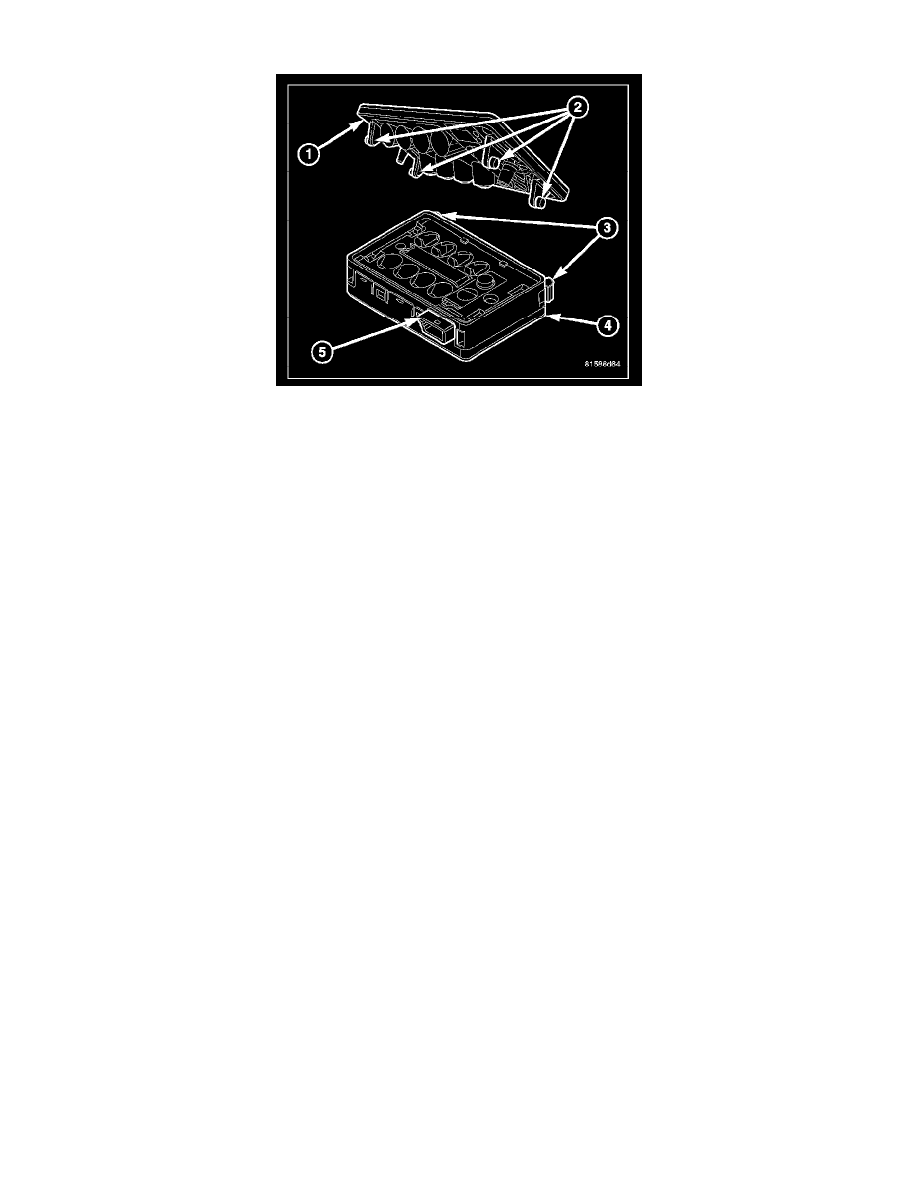Grand Cherokee 4WD SRT-8 V8-6.1L VIN 3 (2006)

Rain Sensor: Description and Operation
The Rain Sensor Module (RSM) (4) is the primary component of the automatic wiper system. In vehicles equipped with the automatic wiper system and
the automatic headlamp system, the RSM also performs the ambient light sensor function; and, therefore, is sometimes referred to as the Rain/Light
Sensor Module (RLSM). The RSM is located on the inside of the windshield just below the inside rear view mirror mounting button. The RSM is
concealed from view within the vehicle interior by a cavity in the top of the housing for the SmartBeam camera on the rear view mirror bracket, but is
visible through the windshield glass from the exterior of the vehicle. See: Lighting and Horns/Headlamp
The molded black plastic sensor housing has an integral connector receptacle (5) at the top containing four terminal pins. These terminal pins connect the
rain sensor to the vehicle electrical system through a dedicated take out and connector of the overhead wire harness that extends from above the
headliner. Openings on the windshield side of the housing are fitted with eight convex clear plastic lenses. A sliding cam lock retainer (3) on each side of
the sensor housing latches the sensor to four pins (2) on the mounting bracket (1), which is permanently bonded to the inside of the windshield glass with
an adhesive pad.
Concealed within the sensor housing is the electronic circuitry of the module, which includes four Infrared (IR) diodes, four photocells, and a
microprocessor. The sensor communicates with other electronic modules in the vehicle over the Controller Area Network (CAN) data bus.
The rain sensor software is Flash compatible, which means it can be reprogrammed using Flash reprogramming procedures. The hardware of the sensor
cannot be adjusted or repaired. If faulty or damaged, the entire module must be replaced. The mounting bracket is serviced only as a unit with the
windshield glass.
The microprocessor-based Rain Sensor Module (RSM) or Rain/Light Sensor Module (RLSM) senses moisture in the wipe pattern on the outside of the
windshield glass and sends wipe commands to the Front Control Module (FCM). Four Infrared (IR) diodes within the sensor generate infrared light
beams that are aimed by four of the convex optical lenses near the base of the sensor through the windshield glass. Four additional convex optical lenses
near the top of the sensor are focused on the infrared light beams on the outside of the windshield glass and allow the four photocells within the sensor to
sense changes in the intensity of these infrared light beams. When sufficient moisture accumulates within the wipe pattern on the windshield glass, the
sensor detects a change in the monitored infrared light beam intensity.
The internal programming of the sensor then sends the appropriate electronic wipe command messages to the FCM over the Controller Area Network
(CAN) data bus. The FCM responds by activating or deactivating the front wiper system. The Steering Control Module (SCM) sends electronic
sensitivity level messages to the RSM over the CAN data bus based upon the driver-selected sensitivity setting of the control knob on the control stalk of
the right multifunction switch. The higher the selected sensitivity setting the more sensitive the rain sensor is to the accumulated moisture on the
windshield glass, and the more frequently the sensor will send wipe commands to the FCM to operate the front wiper system.
Similarly, the photocells within the RSM are able to sense ambient light levels through the windshield glass and provide electronic light level messages
to other modules in the vehicle over the CAN data bus. These messages can be used by the ElectroMechanical Instrument Cluster (EMIC)/Cab Control
Node (CCN) instead of the sun load sensor input to provide the automatic headlamps feature.
The RSM operates on battery current received through a fused B(+) fuse on a non-switched fused B(+) circuit. The RSM receives ground at all times
through a take out of the body wire harness with an eyelet terminal that is secured by a ground screw to the lower left inner C-pillar. It is important to
note that the default condition of the automatic wiper system is low. Therefore, if no message is received by the FCM from the RSM for more than
about five seconds when in the Auto sensitivity wipe mode, the wipers will default to a constant low speed continuous wipe mode.
The hard wired RSM circuits may be diagnosed using conventional diagnostic tools and methods. However, proper testing of the RSM, the FCM, the
SCM and the electronic messages sent and received over the CAN data bus requires the use of a diagnostic scan tool.
